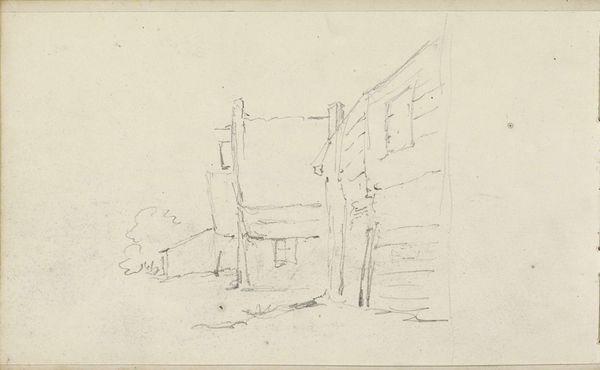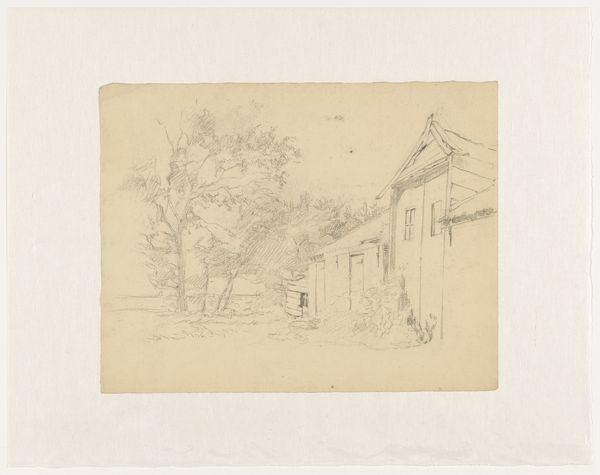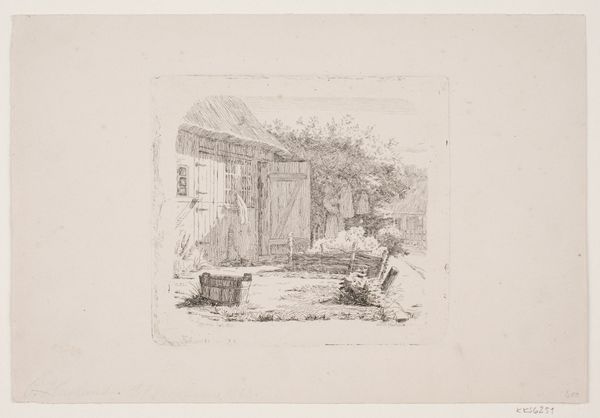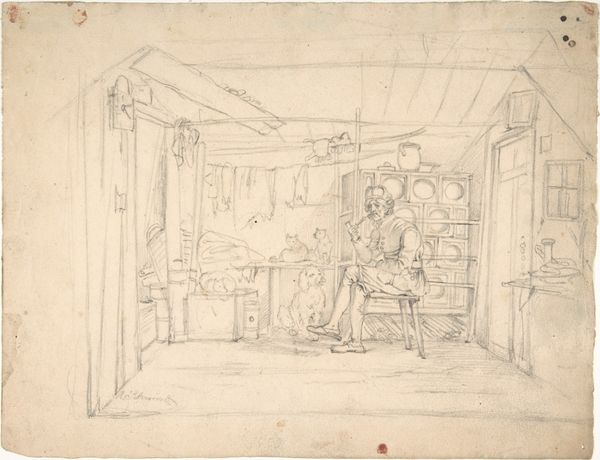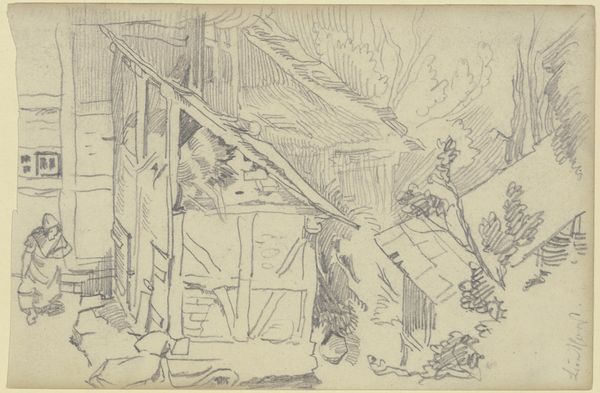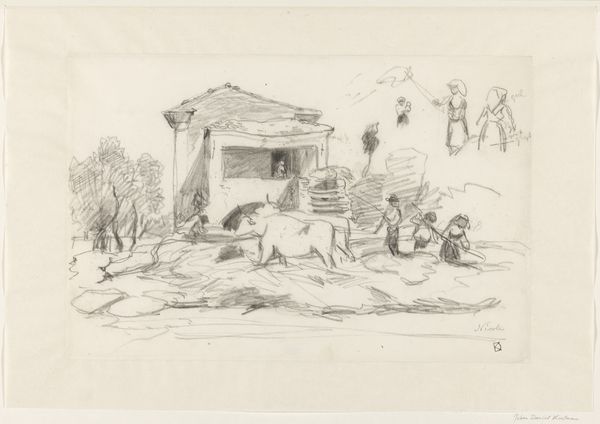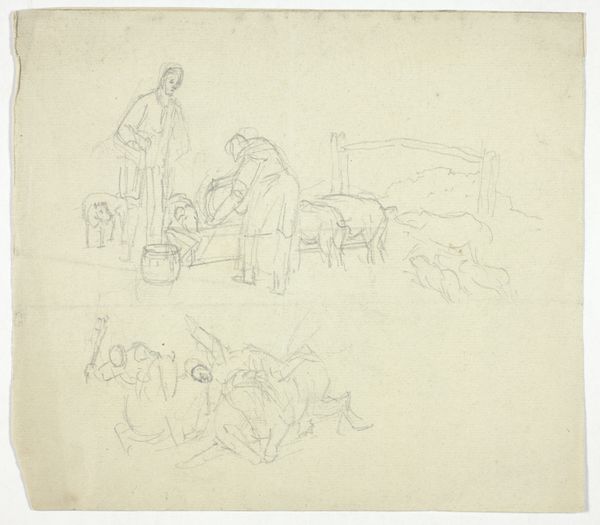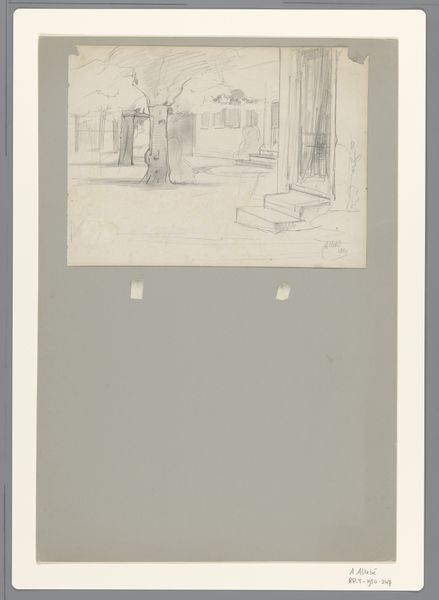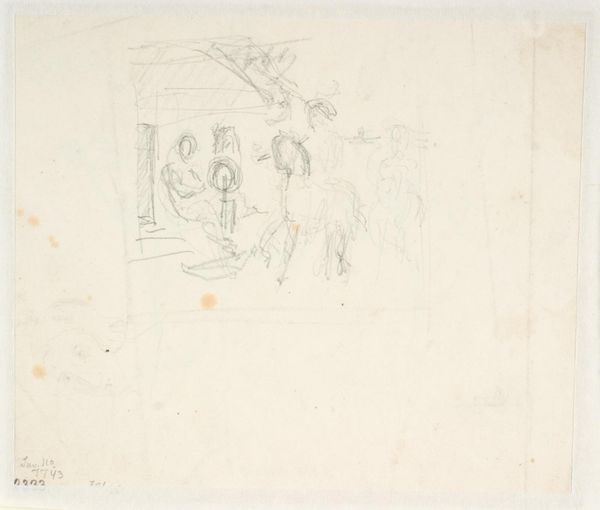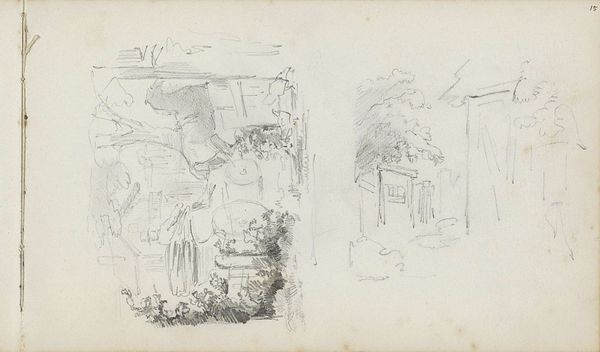
drawing, paper, pencil, architecture
#
drawing
#
16_19th-century
#
landscape
#
paper
#
pencil
#
architecture
Copyright: Public Domain
Curator: Here we have Otto Scholderer's "Vor einer Scheune stehender Mann", a 19th-century pencil drawing on paper held at the Städel Museum. Editor: There’s an immediate sense of solitude. The figure seems lost in thought, the loose architectural backdrop emphasizing his isolation. Curator: Indeed, the rural landscape as a reflection of personal introspection was quite common in the artistic movements of the time. Note the rough quality, suggesting it might have been a preliminary sketch, rather than a finished presentation piece. Editor: The sketchy quality gives it a raw emotional charge. The simple barn becomes almost like a secular cathedral—the standing man, perhaps, a pensive monk. He looks rather ordinary but his positioning gives him significance. Curator: That resonates with artistic currents which focused on ordinary subjects and working classes in rural spaces. This choice represented a break from academic paintings idealizing historical or mythological subject matter. Editor: You see how the soft hatching creates an almost ethereal light around the figure, emphasizing his presence, almost his permanence, against the relatively flimsy background. It's a delicate visual language speaking to resilience. Curator: It is interesting to reflect how Scholderer used humble subject matter and the drawing medium to express human stories which spoke to changing socio-political sentiments in 19th century Germany. Editor: It's striking how much depth is conveyed using minimal lines. He’s standing, waiting, watching… What secrets does this unadorned scene contain, if any? Curator: Its open-endedness almost compels us, as viewers, to project our own contexts and interpretations onto it. The simplicity acts almost as a mirror. Editor: It really stays with you, doesn't it? The simplicity lingers far beyond the first glance.
Comments
No comments
Be the first to comment and join the conversation on the ultimate creative platform.

